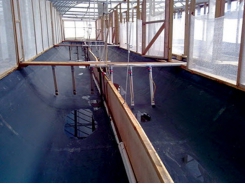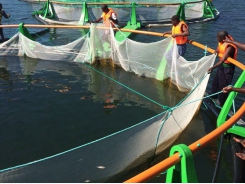US: Novel recycling system turns chicken manure into feed

© istock
Regreen Organics is partnering with the University of Maryland Eastern Shore to showcase a waste recycling system able to produce feed ingredients; it does not rely on incineration, leaves behind no waste or byproducts and is done in just 30 minutes, says CEO.
Leftover food and table scraps generated across the US university's campus will no longer be sent to a local landfill.
The project took about a year to get off the ground, said Jeff Camera, managing partner and CEO with Regreen Organics.
Pilot systems are expected to be in place and able to start production early next year.
“We’re in the process of bringing to our systems to a local farm in Somerset County,” he told FeedNavigator. “The goal is the first quarter of 2018 so we can start running product with it and in the semester bring on interns and reach out to a variety of areas.”
“It’s a pilot,” he added. “We’re looking to process 200 tons a day, five days a week.”
Process
Regreen’s process makes use of a patented and proprietary recycling system designed to break down organic waste material, including food waste, palm leaves and some agricultural by-products like chicken litter, said Camera.
The system sorts and shreds organic waste material, then uses heat and separating systems to kill bacteria and odors and remove moisture and oil, the company said. It can generate several end-products including animal feed ingredients, irrigation-quality water, fertilizer and fuel pellets.
Non-organic items like metals and plastic are removed before the recycling process starts, said Camera.
The output of the machine can be altered by the materials used, he said. Pelleting of the meal-like substance generated is done after the initial processing.
The system can be scaled to different production amounts ranging from batches of three-quarters of a ton to about 42 tons an hour, with an average load processing in about 30 minutes, he said. It is also a relatively compact machine, and a system capable of managing 200 tons of waste a day would fit in about 15,000 square feet.
The feed ingredient currently generated has been focused on use with ruminants, he said. However, the upcoming research project is anticipated to explore additional options.
“Most decomposition systems or composting can only take organic matter not meat, protein or bones – our system can,” said Camera.
The company currently has demonstration machines in use in California, but is hoping to expand the research done on the recycling capabilities and Regreen’s presence in the eastern US, he said. One goal of the project will be to attempt to improve sustainability by removing food waste and some agricultural waste from landfills and providing a template that could be used in multiple places.
“We’re really bringing together what our technology can do, what the university can do through their agriculture department, food service – we’re bringing together a lot of departments at the university,” he said. “We’re trying to create a zero waste campus in a year.”
University partnership
The project with the University of Maryland Eastern Shore is intended to be part of a long-term investment in the region, said Camera.
“The total project in Maryland, we’re looking at roughly $10-20m investment over a period of time,” he said. “We’re looking at making a significant investment in here – our theory is that by demonstrating that it can work here, it will allow our systems to be replicated elsewhere in the US and abroad.”
“What we’re doing with the program, we’ll have university students that will come up with paper [proposals] what blends do they want to see,” he said. “We’re working with professors and partners to really try and solve the problems.”
Additionally, a further stage of the project is expected to include feeding trials looking at different types of products generated, he said. However, that work likely will be phase two or three of the effort.
The project also plans to work with farmers in the area as one potential waste input the company is interested in working with will be chicken litter, said Camera.
“We’re trying to create a sustainable material,” he said. “We’d be able to process it onsite and turn it back into a product for bedding, or use the energy pellet to decrease energy costs.”
Có thể bạn quan tâm
Phần mềm

Phối trộn thức ăn chăn nuôi

Pha dung dịch thủy canh

Định mức cho tôm ăn

Phối trộn phân bón NPK

Xác định tỷ lệ tôm sống

Chuyển đổi đơn vị phân bón

Xác định công suất sục khí

Chuyển đổi đơn vị tôm

Tính diện tích nhà kính

Tính thể tích ao hồ



 Controlling diseases in aquaculture systems
Controlling diseases in aquaculture systems  Salt water aquaculture
Salt water aquaculture